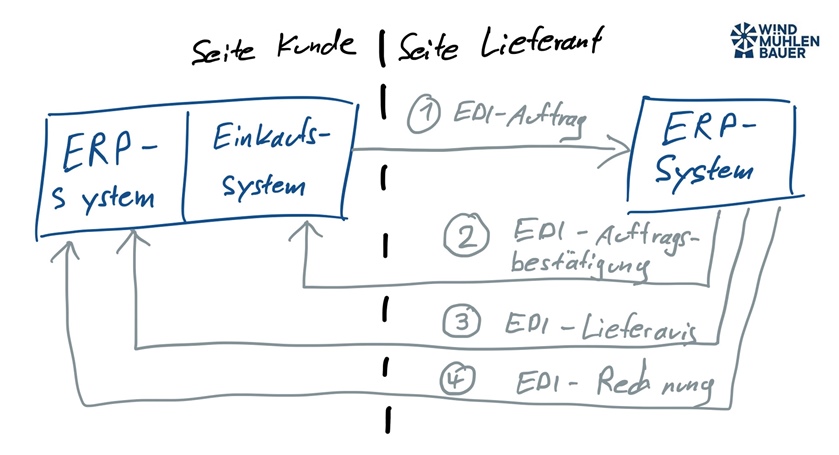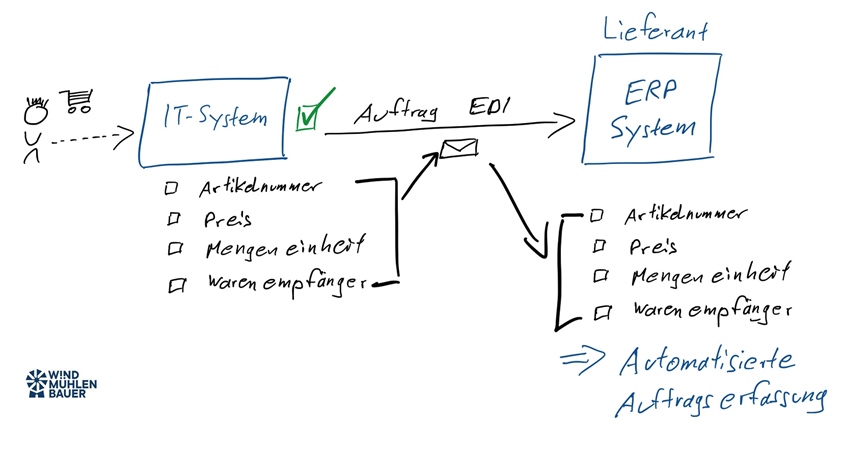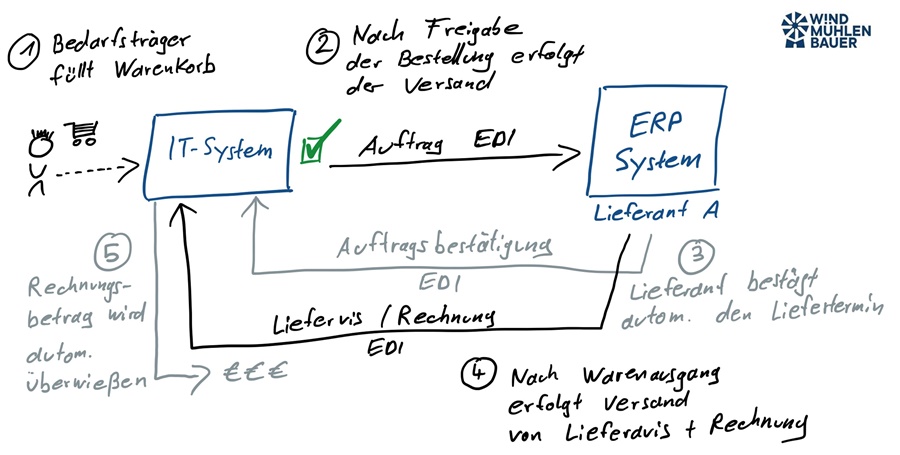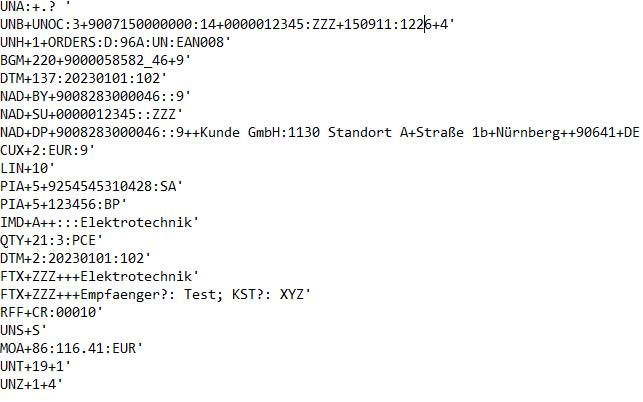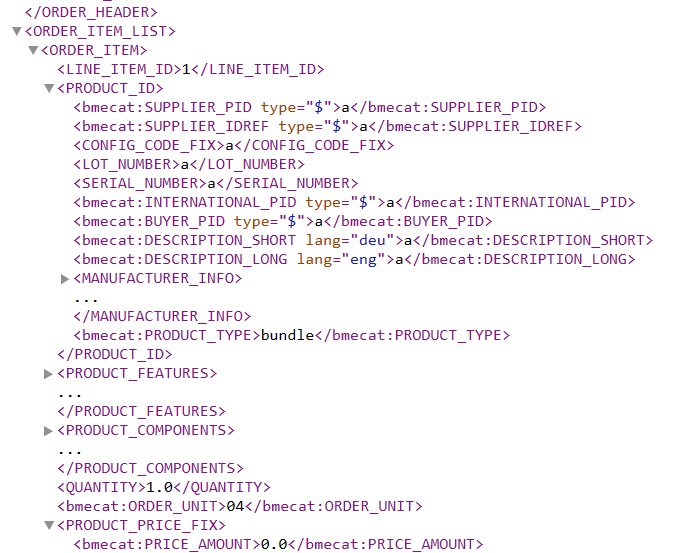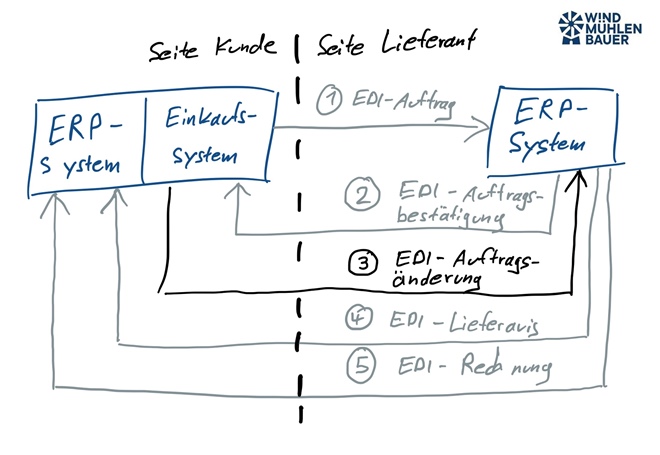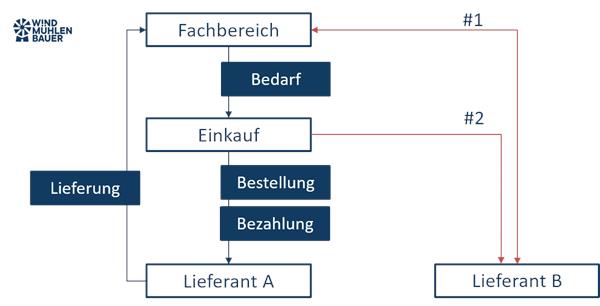Acquiring new customers is notoriously exhausting and costs a lot of time and money. Existing customers have already been acquired and greater integration of the supplier into its customers’ processes increases customer loyalty. The cXML punchout catalogue makes an important contribution to this and optimizes the sales process.
Introduction to cXML Punchout Catalog
cXML-Punchout is a standardized interface that facilitates the exchange of Product Data between suppliers and purchasing organizations. This technology was developed by Ariba (now SAP Ariba) to make the integration of product catalogs into purchasing systems efficient and error-free. By using a cXML punchout catalogue, the ordering process is optimized as Product Data is transferred to the purchasing system in real time as part of an order.
➡️ cXML (Commerce eXtensible Markup Language) is a structured format for the exchange of Product Data and messages (e.g. orders) between companies
The ordering process via cXML Punchout
The purchasing process with a cXML punchout catalog takes place in several steps, which can be implemented in purchasing systems such as SAP Ariba or coupa :

Step 1: Supplier selection
The buyer opens his purchasing system and selects the
supplier required. This functionality is available in all standard
purchasing systems.
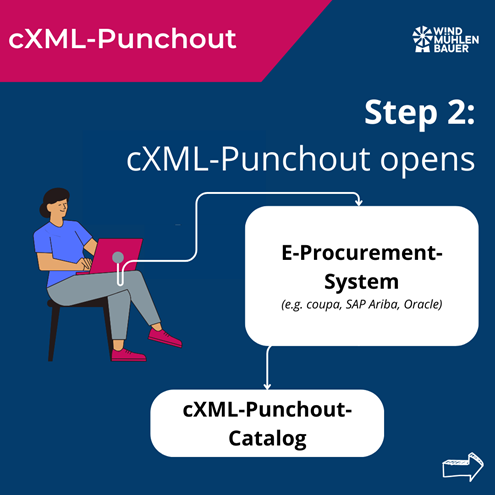
Step 2: Opening the Punchout catalog
After selecting the supplier, the cXML Punchout catalog is opened automatically.
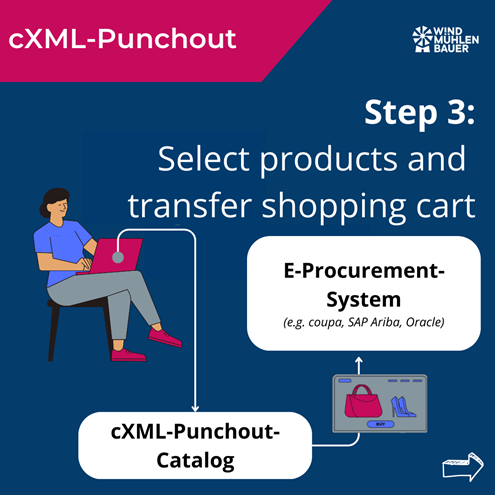
Step 3: Product selection
The buyer selects the desired products and adds them to their shopping cart
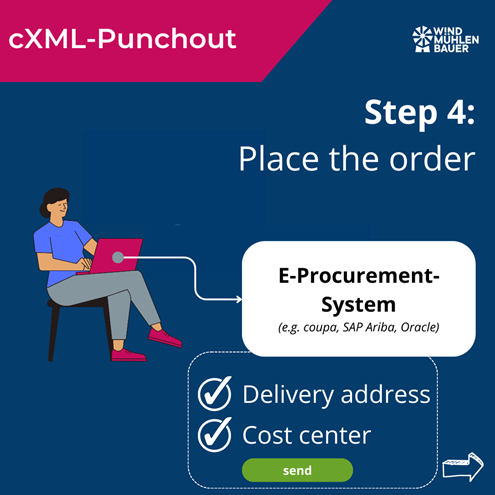
Step 4: Transfer and order
The filled shopping cart is transferred to the purchasing system. There, the buyer enters the delivery address and the cost center and sends the order.
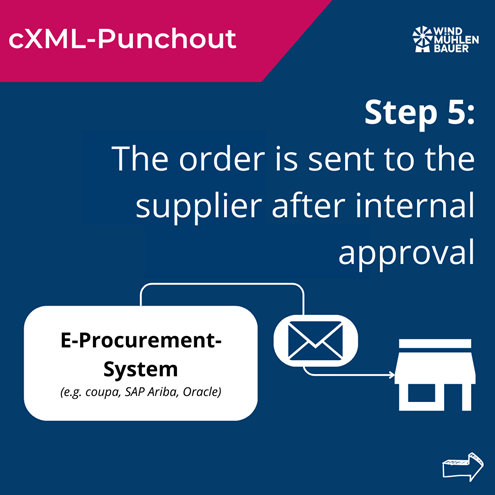
Step 5: Internal release and dispatch
After internal approval, the order is sent to the supplier, who will deliver the goods. The ordering process is independent of the Punchout catalog. The ordering process runs as usual. If the exchange of PDF orders via e-mail has been agreed, the purchasing company will also continue to send PDFs.

Overall process:
The buyer selects the desired supplier in the purchasing system. After the selection, the supplier’s cXML Punchout catalog is opened automatically. The buyer selects the desired products and places them in the shopping cart. The filled shopping cart is transferred to the purchasing system, where the buyer enters the delivery address and cost center and sends the order. After internal approval, the order is sent to the supplier, who delivers the goods.
Advantages of a cXML Punchout catalog for suppliers
- Increased visibility: Product Data, prices and availability are displayed directly in the purchasing organization’s purchasing system. This increases findability and sales.
- Time savings and error reduction: Automated processes reduce manual effort and minimize input errors.
- Real-time updating: Product information and prices can be updated at any time. This ensures that the supplier’s and customer’s database is always up to date.
- Competitive advantage: The provision of a cXML punchout catalog can be a decisive factor in the selection of a supplier.
- Customer loyalty: Simplified and faster order processing increases customer satisfaction.
- Automation of business processes: The database enables error-free automation of downstream processes such as order and invoice management.
Advantages for purchasing companies
- Increased efficiency: The direct integration of supplier catalogs into your own purchasing system simplifies the ordering process.
- Reduced error rate: Automated data transfers minimize the risk of manual input errors and misunderstandings.
- Transparency: Access to current product information, prices and availability without having to ask the supplier.
- Time saving: Fast and uncomplicated ordering processes save time for productive activities.
- Improved collaboration: Standardized processes improve collaboration with the supplier.
Integration of cXML Punchout
Supported systems
cXML Punchout can be integrated with various purchasing systems, including:
Implementation options
- In-house development: Companies can develop their own cXML interface for their online store. This method offers a high degree of flexibility, but requires internal development and service expertise.
- Standard solutions: Standard software solutions that have been specially developed for cXML integration are ready for use at short notice and are more cost-effective thanks to usage-based fees.
- Plugins: Ready-made plugins are available for common store systems. The interface can be used by activating it in the online store, provided that the store system (Shopware, Magento) is used as standard without individual adjustments.
Conclusion
A cXML punchout catalog helps to optimize the sales and purchasing process. It offers considerable advantages for suppliers and purchasing companies by increasing efficiency, reducing errors and increasing customer loyalty. Whether through in-house development, standard solutions or plug-ins – the integration of a cXML punchout catalog accelerates the sales process and creates customer loyalty.

Peter Prütting is an expert in value-oriented and digital business development. With over 15 years of sales experience from the perspectives of wholesale, manufacturing, and e-marketplaces, he takes a holistic view. His colleagues value him as a customer-centric and focused leader who guides teams through digital transformation. Away from his daily work, he recharges his batteries by mountain biking.
FAQ – frequently asked questions
cXML Punchout is a standardized interface developed by Ariba (now SAP Ariba). It allows Product Data to be exchanged quickly between suppliers and purchasing organizations.
The process includes selecting the supplier, opening the Punchout catalog, selecting the product, transferring the shopping cart to the purchasing system and sending the order.
It minimizes manual entries and errors, simplifies order placement and strengthens customer loyalty through convenient order processing.
The benefits include increased visibility in the customer system, time savings, real-time updating, competitive advantages and stronger customer loyalty.
Increased efficiency, reduced error rate, transparency, time savings and improved cooperation with suppliers.
SAP Ariba, Coupa, Oracle
In-house developments, standard solutions or plug-ins for existing store systems.
Sources
- Coupa, catalog integration: https://compass.coupa.com/de-de/products/product-documentation/supplier-resources/for-suppliers/coupa-supplier-portal/set-up-the-csp/catalogs/punchout-catalogs
- Wikipedia, protocol: https://en.wikipedia.org/wiki/CXML






